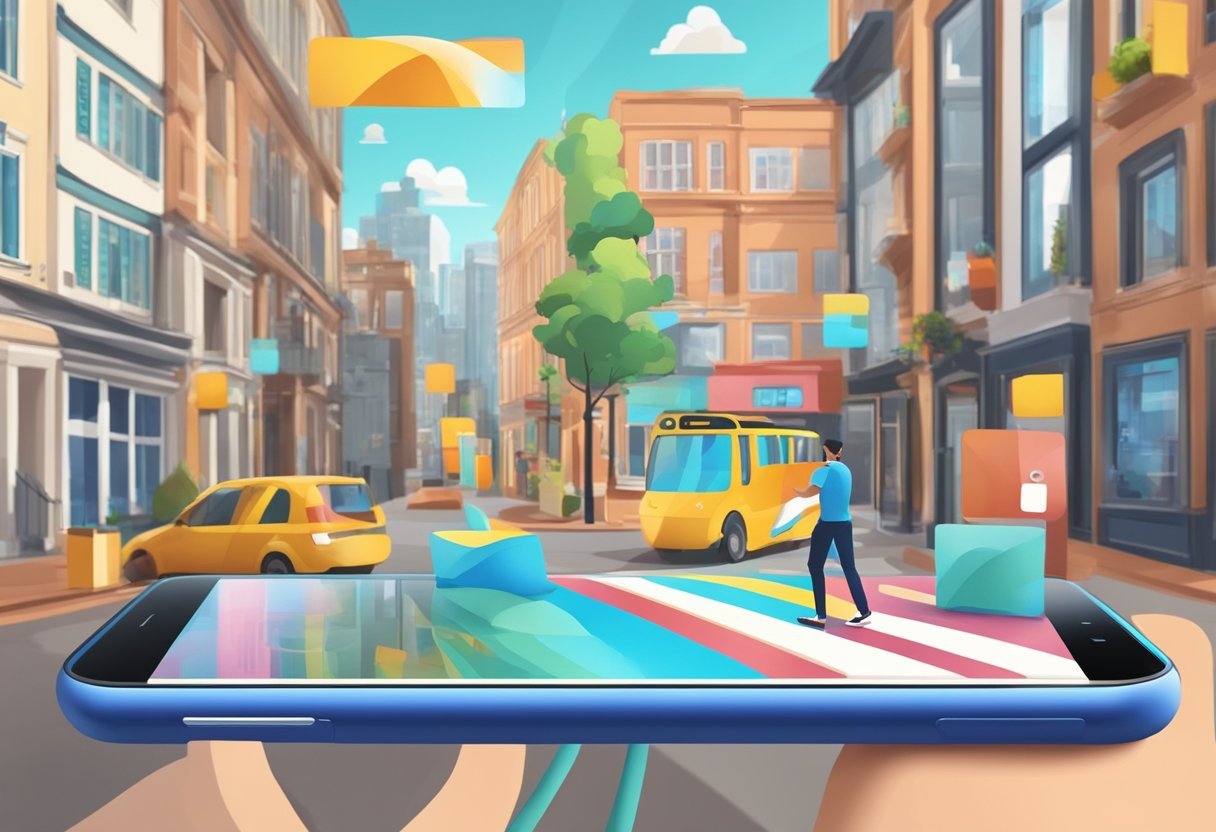Augmented reality campaigns are becoming increasingly popular among marketers as a way to engage consumers and create unique experiences. AR technology allows digital content to be overlaid on the physical world, creating an interactive and immersive experience for users. AR campaigns can be developed for a range of purposes, from promoting products and services to raising brand awareness.
Understanding augmented reality campaigns is important for marketers looking to create engaging experiences for their customers. Developing an AR campaign involves identifying the target audience, determining the goals of the campaign, and creating content that is both interactive and informative. Successful AR campaigns also require careful planning and execution, as well as a thorough understanding of the technology and its capabilities.
Case studies of successful AR campaigns can provide valuable insights into how to create effective campaigns. Brands such as IKEA, Coca-Cola, and Nike have all used AR to create engaging experiences for their customers. By understanding the strategies and techniques used in these campaigns, marketers can develop their own successful AR campaigns that engage and delight their customers.
Key Takeaways
- Augmented reality campaigns use technology to create interactive and immersive experiences for users.
- Developing a successful AR campaign involves careful planning, execution, and understanding of the technology.
- Case studies of successful AR campaigns can provide valuable insights into how to create effective campaigns.
Understanding Augmented Reality Campaign
Augmented Reality (AR) is a technology that superimposes digital elements, such as images, animations, information, and sound, onto the real-world environment through a device, creating a blended reality. AR has been around for several years, but it has become increasingly popular in recent years due to the rise of mobile devices and the availability of affordable AR technology.
Core AR Technology
AR technology works by using a combination of hardware and software to create a digital overlay on the real world. The hardware typically consists of a camera, sensors, and a display, while the software uses computer vision algorithms to identify objects and track their movement in real-time. This allows the digital overlay to move and interact with the real world, creating an immersive experience.
AR technology can be divided into two main categories: marker-based and markerless. Marker-based AR uses a physical marker, such as a QR code or image, to trigger the digital overlay. Markerless AR, on the other hand, uses computer vision algorithms to identify and track objects in the real world without the need for a physical marker.
AR in Marketing and Advertising
AR has become an increasingly popular tool for marketers and advertisers to create interactive and engaging consumer experiences. AR marketing campaigns can take many forms, such as product demonstrations, virtual try-ons, and interactive games.
One of the main advantages of AR in marketing and advertising is its ability to create a more immersive and emotional connection with the consumer. By allowing the consumer to interact with the product or brand in a more tangible way, AR can create a more memorable and impactful experience.
AR marketing campaigns can also provide valuable data and insights into consumer behavior. By tracking how consumers interact with the digital overlay, marketers can gain insights into consumer preferences and behaviors, which can be used to improve future campaigns.
AR technology has the potential to revolutionize the way marketers and advertisers create consumer experiences. By leveraging the power of AR, marketers can create more immersive and engaging campaigns that resonate with consumers on a deeper level.
Developing an AR Campaign

Creating an augmented reality (AR) campaign can be a unique and immersive experience for brands to engage with their audience. Developing an AR campaign requires a well-planned approach and a combination of design, code, and software development kit (SDK).
Conceptualizing the Experience
The first step in developing an AR campaign is to conceptualize the experience. Brands need to identify the goals of the campaign and how AR can be used to achieve those goals. This involves understanding the target audience and their interests, behaviors, and tech-savviness.
To create a successful AR campaign, it is essential to provide a unique and immersive experience to the audience. Brands should focus on creating AR content that provides genuine value, such as entertainment, information, or exclusive offers. This will help to keep the audience engaged and emotionally connected to the brand.
Design and Development
Once the concept of the AR campaign is finalized, the next step is to work on the design and development. The design of the AR experience should be engaging and visually appealing, with a focus on the user interface and user experience.
The development of the AR campaign involves a combination of coding and software development kit (SDK). Brands should work with experienced developers who have expertise in AR market and software platforms. This will ensure that the AR campaign is developed using the latest technology and is compatible with different devices.
Software and Platforms
There are several software and platforms available for developing AR campaigns. Brands should choose the software and platform that best suits their needs and budget. Some of the popular AR software and platforms include ARKit, ARCore, Vuforia, and Unity.
It is important to note that developing an AR campaign requires a significant investment in terms of time, effort, and resources. However, if done correctly, an AR campaign can provide a unique and immersive experience to the audience, resulting in increased engagement and brand awareness.
20 Practical Augmented reality campaign ideas

- Virtual Storefront Windows: Transform store windows into interactive displays where passersby can browse products in 3D. Start by setting up AR markers on the windows and integrating them with an app that displays the products.
- AR-Enabled Flyers and Postcards: Design flyers that come to life with AR, showing a video or animation when scanned. Begin by creating a scannable code and linking it to an AR platform that triggers the content.
- Augmented Reality Catalogs: Offer catalogs where each page can be scanned to view products in a 3D space. Start by incorporating AR codes into your print materials and developing the 3D models for display.
- Interactive Trade Show Booths: Create an AR experience at trade shows that showcases products or services in an immersive way. Begin by designing an AR app specific to the event that visitors can download and use on-site.
- AR Mural Campaigns: Commission murals that include AR elements, turning public art into a marketing tool. Start by collaborating with artists and AR developers to integrate digital experiences with the physical artwork.
- Location-Based AR Experiences: Develop AR experiences that can be accessed in specific locations, like a virtual tour or game. Start by choosing a platform that supports geolocation and creating the content to be anchored to specific sites.
- Augmented Reality Invitations: Send out event invitations that include an AR experience related to the event theme. Start by embedding AR triggers in the invitations and linking them to the interactive content.
- Product Launch Teasers: Use AR to give sneak peeks of new products, revealing features in an interactive format. Start by developing teaser content and an AR app that can reveal the product in stages.
- AR-Enhanced Business Presentations: Make business presentations more engaging with AR elements that illustrate data and concepts. Begin by creating AR visuals that can be triggered during the presentation.
- Augmented Reality Packaging: Design product packaging that customers can scan to reveal brand stories or additional product information. Start by embedding AR codes on the packaging and creating the content they’ll unlock.
- AR-Driven Scavenger Hunts: Organize a scavenger hunt with AR clues leading to different products or locations. Begin by creating an app that guides users through the hunt with AR cues.
- Virtual Product Demonstrations: Allow customers to see how products work in real-time with AR demos. Start by creating 3D models and animations that can be accessed via an AR app.
- Interactive Print Ads: Make print advertisements in magazines and newspapers come to life with AR. Start by incorporating scannable images or codes that, when scanned, trigger the AR experience.
- AR User Manuals: Replace traditional user manuals with AR guides that show how to use a product. Begin by developing step-by-step AR instructions that can be accessed through an app.
- Augmented Reality Loyalty Programs: Enhance loyalty cards with AR, providing a fun and interactive way to track rewards. Start by integrating AR technology into your existing loyalty system.
- AR Event Enhancements: Offer AR experiences at events, such as interactive maps or information about speakers. Start by developing an event-specific AR app or feature.
- Virtual Test Drives: Allow customers to experience a virtual test drive of a vehicle through AR. Begin by creating a realistic AR simulation of the car’s interior and performance.
- Augmented Reality Tutorials: Provide customers with tutorials for complex products using AR. Start by filming tutorial content and using an AR app to overlay the instructions onto the real product.
- AR Art Exhibitions: Create an art exhibition where each piece has an AR component, offering additional context or stories. Begin by working with artists to develop the AR content related to their work.
- Augmented Reality Menus: Develop AR menus for restaurants where dishes are visualized in 3D when scanned. Start by creating digital models of menu items that can be viewed through an AR-enabled app.
Case Studies of Successful AR Campaigns

Retail and E-Commerce Innovations
In recent years, many retail and e-commerce brands have adopted augmented reality (AR) technology to enhance the customer experience and boost sales. One of the most successful AR campaigns was launched by IKEA, which introduced the IKEA Place app in 2017. The app allows customers to visualize how IKEA furniture would look in their homes before making a purchase. As a result, the app has increased customer engagement and sales for the company.
Another successful AR campaign was launched by Sephora, which introduced the Sephora Virtual Artist app in 2016. The app allows customers to try on makeup virtually using their phone’s camera. This campaign has increased customer engagement and sales for Sephora and has also helped the company to stand out in a highly competitive market.
Interactive Marketing Initiatives
Interactive marketing initiatives have also been successful in using AR technology to engage customers. Burger King’s “Burn That Ad” campaign, launched in 2018, allowed customers to scan a competitor’s ad with the Burger King app and “burn” it in exchange for a free Whopper. This campaign increased customer engagement and sales for Burger King.
Starbucks launched an AR campaign in 2019 that allowed customers to scan their cups with their phones to access interactive games and experiences. This campaign increased customer engagement and brand loyalty for Starbucks. Pepsi Max launched an AR campaign in 2014 that allowed customers to scan a Pepsi Max can with their phones to access an interactive game. This campaign increased customer engagement and sales for Pepsi.
Ford launched an AR campaign in 2017 that allowed customers to explore the features of the Ford EcoSport using their phones. This campaign increased customer engagement and awareness of the Ford EcoSport. Luxury fashion brands such as Gucci and Burberry have also used AR technology to create interactive experiences for customers. These campaigns have increased customer engagement and brand awareness for the companies.
AR technology has been successful in enhancing the customer experience and boosting sales for many retail and e-commerce brands. Interactive marketing initiatives have also been successful in engaging customers and increasing brand loyalty.
Engaging Consumers with AR

Augmented Reality (AR) has proven to be a powerful tool for engaging consumers and enhancing their shopping experiences. AR technology allows customers to interact with products in a way that was previously impossible, leading to increased engagement, sales, and customer satisfaction.
Enhancing Shopping Experiences
AR technology has revolutionized the way consumers shop, providing them with a more immersive and interactive experience. AR-powered mobile apps enable customers to try on virtual makeup, clothing, and furniture, making it easier for them to visualize how products will look in real life. This virtual try-on experience not only enhances the shopping experience but also helps customers make more informed purchasing decisions.
AR technology can be used to provide customers with more detailed product information, such as product specifications, reviews, and ratings. This information helps customers make more informed purchasing decisions and increases their confidence in the product.
Social Media and AR Filters
Social media platforms have also embraced AR technology, using AR filters to engage customers and promote products. AR filters allow customers to try on virtual makeup, clothing, and accessories, providing a fun and interactive way to promote products. Moreover, AR filters can be used to create brand awareness and encourage user-generated content. Customers can share their AR filter experiences on social media, increasing brand visibility and engagement.
AR technology is a powerful tool for engaging customers and enhancing their shopping experiences. By enabling customers to interact with products in a more immersive and interactive way, AR technology can increase engagement, sales, and customer satisfaction. Social media platforms have also embraced AR technology, using AR filters to engage customers and promote products.
Measuring the Impact of AR Campaigns
Augmented reality (AR) campaigns are becoming increasingly popular among businesses as they offer a unique and engaging experience to customers. However, measuring the impact of these campaigns can be challenging. In this section, we will discuss the different ways businesses can measure the impact of their AR campaigns.
Analytics and Data Interpretation
One of the most important tools for measuring the impact of AR campaigns is analytics. By using analytics tools, businesses can track various metrics such as impressions, engagement rate, and dwell time. This data can help businesses understand how well their AR experiences are resonating with their audience.
Interpreting this data is equally important. Businesses need to analyze the data to identify trends and patterns that can help them optimize their AR campaigns. For instance, if a particular AR experience has a high engagement rate, businesses can use this information to create similar experiences in the future.
Brand Value and Customer Reach
AR campaigns can also help businesses increase their brand value and reach. By creating high-quality AR experiences, businesses can showcase their brand in a unique and memorable way. This can help increase brand awareness and customer loyalty.
AR campaigns can also help businesses reach new audiences. By creating AR experiences that are shareable, businesses can leverage the power of social media to reach a wider audience. This can help increase the reach of the campaign and attract new customers.
Measuring the impact of AR campaigns requires a combination of analytics and data interpretation, as well as a focus on brand value and customer reach. By using these tools, businesses can create high-quality AR experiences that engage their audience and help them achieve their marketing goals.
Frequently Asked Questions
How can brands effectively integrate augmented reality into their marketing strategies?
To effectively integrate augmented reality (AR) into marketing strategies, brands should first identify their target audience and analyze their preferences. Brands can then create engaging AR experiences that resonate with their audience. It is also important to ensure that the AR experience aligns with the brand’s message and values. Brands can leverage AR in various ways, such as product visualization, gamification, and interactive storytelling.
What are some creative concepts for launching an augmented reality advertising campaign?
Brands can create various creative concepts for launching an AR advertising campaign. For instance, they can use AR to create interactive product demos, gamify their products, or use AR to create immersive experiences that showcase their brand values. Brands can also use AR to create scavenger hunts or create interactive billboards that engage consumers.
Can you provide successful case studies of augmented reality campaigns?
Yes, there have been several successful AR campaigns that have helped brands increase their engagement and sales. For example, IKEA’s AR app, “IKEA Place,” allows users to virtually place furniture in their homes before making a purchase, resulting in a 98% satisfaction rate. Another successful AR campaign is Pepsi Max’s “Unbelievable Bus Shelter” campaign, which used AR to create an immersive experience for commuters waiting at a bus stop.
What are the best practices for designing augmented reality content for advertising?
When designing AR content for advertising, it is important to keep in mind the user experience. Brands should ensure that the AR experience is easy to use and provides value to the user. It is important to optimize the AR experience for the device being used. Brands should also ensure that the AR experience aligns with their brand values and messaging.
How does augmented reality enhance out-of-home (OOH) advertising?
AR enhances OOH advertising by creating immersive experiences that engage consumers and increase their interaction with the brand. AR can turn static billboards into interactive experiences, allowing consumers to engage with the brand in a new way. It can also provide consumers with valuable information, such as directions to a store or information about a product.
In what ways does augmented reality advertising impact consumer engagement on social platforms like Facebook?
AR advertising on social platforms like Facebook can increase consumer engagement by providing an interactive experience that captures their attention. AR ads can also provide consumers with valuable information, such as product details and pricing, without the need to leave the platform. AR ads can increase brand awareness and recall by creating a memorable experience for the consumer.




